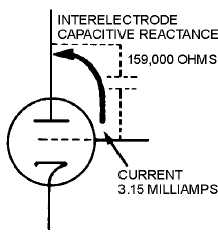2-2
MICROWAVE TUBE PRINCIPLES
The efficiency of conventional tubes is largely independent of frequency up to a certain limit. When
frequency increases beyond that limit, several factors combine to rapidly decrease tube efficiency. Tubes
that are efficient in the microwave range usually operate on the theory of VELOCITY MODULATION, a
concept that avoids the problems encountered in conventional tubes. Velocity modulation is more easily
understood if the factors that limit the frequency range of a conventional tube are thoroughly understood.
Therefore, the frequency limitations of conventional tubes will be discussed before the concepts and
applications of velocity modulation are explained. You may want to review NEETS, Module 6,
Introduction to Electronic Emission, Tubes, and Power Supplies, Chapters 1 and 2, for a refresher on
vacuum tubes before proceeding.
Frequency Limitations of Conventional Tubes
Three characteristics of ordinary vacuum tubes become increasingly important as frequency rises.
These characteristics are interelectrode capacitance, lead inductance, and electron transit time.
The INTERELECTRODE CAPACITANCES in a vacuum tube, at low or medium radio frequencies,
produce capacitive reactances that are so large that no serious effects upon tube operation are noticeable.
However, as the frequency increases, the reactances become small enough to materially affect the
performance of a circuit. For example, in figure 2-1A, a 1-picofarad capacitor has a reactance of 159,000
ohms at 1 megahertz. If this capacitor was the interelectrode capacitance between the grid and plate of a
tube, and the rf voltage between these electrodes was 500 volts, then 3.15 milliamperes of current would
flow through the interelectrode capacitance. Current flow in this small amount would not seriously affect
circuit performance. On the other hand, at a frequency of 100 megahertz the reactance would decrease to
approximately 1,590 ohms and, with the same voltage applied, current would increase to 315
milliamperes (figure 2-1B). Current in this amount would definitely affect circuit performance.
Figure 2-1A.—Interelectrode capacitance in a vacuum tube. 1 MEGAHERTZ.



